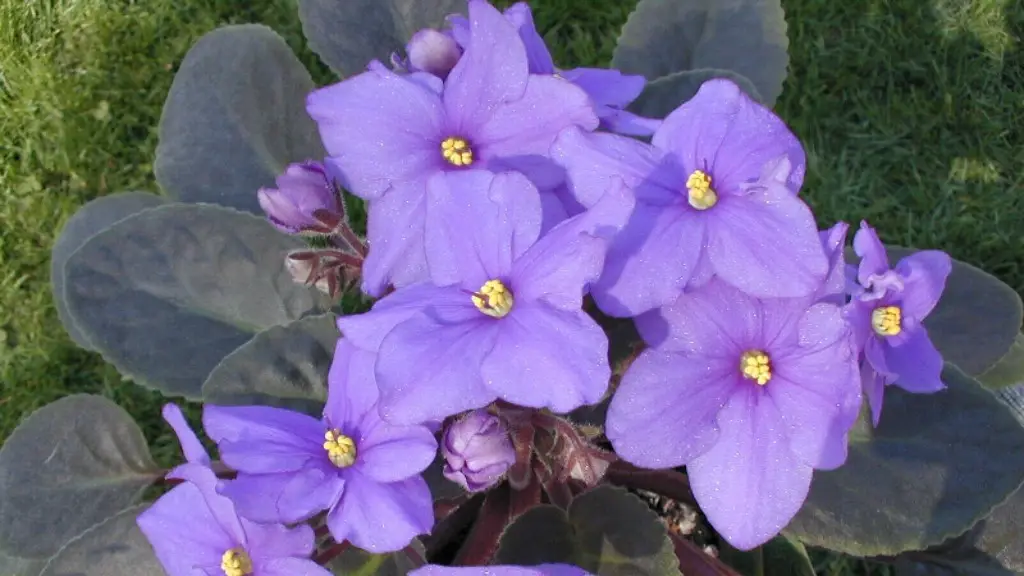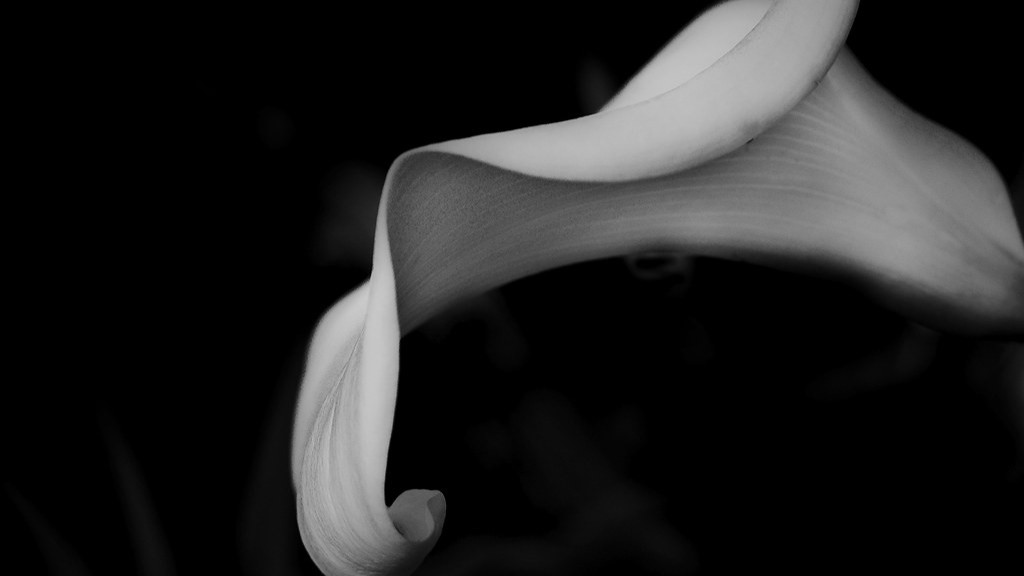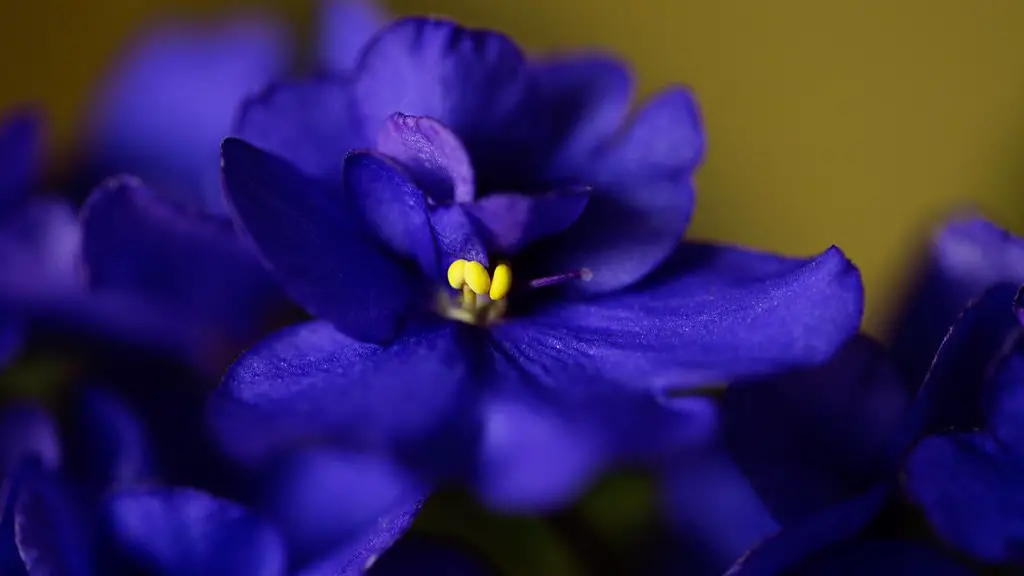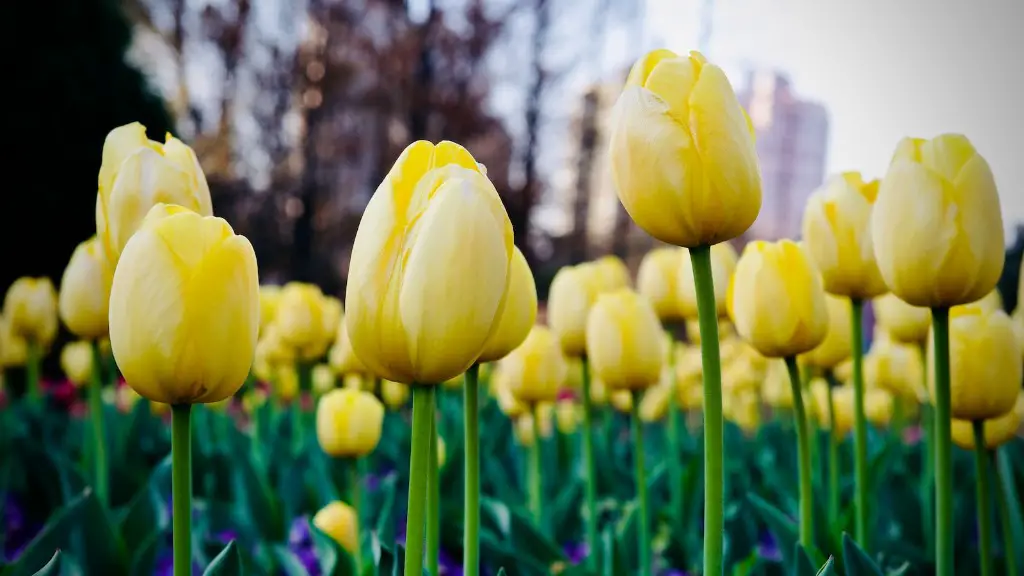African violets are lovely, delicate flowers that are native to Africa. They come in a variety of colors, from deep purple to pale pink, and their delicate petals make them a favorite among flower lovers. While African violets are not difficult to grow, they do require some special care. In this article, we will share some tips on how to make new African violets thrive.
There are a few ways to propagate African violets, including leaf cuttings, stem cuttings, and division.
To propagate from a leaf cutting, remove a leaf from the mother plant with a sharp knife. Cut the leaf into two or three sections, making sure each section has at least one vein. Dip the cut end of the leaf in rooting hormone and plant in moist potting mix. Cover the pot with plastic wrap or a clear container to create a humid environment. Place the pot in a warm, bright location out of direct sunlight. Keep the soil moist but not soggy. New plants should emerge in 4-8 weeks.
To propagate from a stem cutting, remove a 6-8 inch section of stem from the mother plant. Cut the stem into 2-3 inch sections, making sure each section has at least one set of leaves. Dip the cut end of the stem in rooting hormone and plant in moist potting mix. Cover the pot with plastic wrap or a clear container to create a humid environment. Place the pot in a warm, bright location out of direct sunlight. Keep the soil moist but not soggy. New plants should emerge in 4-8 weeks.
Division is a method
What is the best way to propagate African violets?
African violets can be easily propagated by leaf cuttings. To do this, select a firm, healthy leaf and cut it off with a sharp knife, leaving 1 to 1½ inches of the leaf stem (petiole) attached to the leaf blade. Fill a pot with a moistened 50:50 mix of vermiculite and coarse sand, and insert the leaf cutting into the mix, making sure that the leaf is in contact with the moistened media. Water the pot lightly and place it in a warm, bright location out of direct sunlight. Keep the media moist but not soggy, and in a few weeks, new plants will emerge from the leaf axils.
Cuttings can be propagated in either potting mix or water, both of which are easy to follow methods that usually result in a new healthy African violet.
How do I make my own African violet mix
African violet soil mix should be light and well-draining, yet hold moisture well. A good mix will have 1 part peat moss, humus, or leaf mold, 1 part garden soil, and 1 part perlite, vermiculite, or sand. This will help ensure that your plants have the nutrients they need and the drainage they require.
African violets and rex begonias are both easy to propagate from leaf cuttings. Just use a whole leaf or even a piece of a leaf, and place it in a pot of soil. Be sure to have the pot of soil ready before you take the cutting, as a detached leaf will wilt quickly.
Is it better to root African violets in water or soil?
African violets are relatively easy to root in water using a leaf. The quickest and easiest way to do this is to take a leaf from your existing African violet plant, or even from a friend’s plant. Simply remove a leaf from the plant, and place it in a cup or jar of water. Make sure that the leaf is submerged, and wait for it to develop roots. Once the roots are a few inches long, you can transplant the leaf into soil.
The reason African violets take longer to start roots in water is because they are not getting the nutrients they need from the soil. However, if you compare a 6-month old African violet started in water to a 6-month old African violet started in soil, you will see that the one started in water is a larger, healthier plant. This is because African violets are able to get all the nutrients they need from the water, which makes them grow faster and healthier.
Can you water African violets with coffee?
If you have plants that prefer more acidic soil, you may want to try watering them with coffee. Many plants seem to respond well to this method, and it can help keep them healthy and thriving. Just be sure to dilute the coffee with water so that it is not too strong for the plants, and do this weekly for best results.
It is best to water African violets from the bottom. This aids in keeping the leaves dry, which reduces the chances of leaf spots. It is also important not to use cold water, as this can shock the plant; lukewarm or warm water is best.
How long does it take for African violet cuttings to root
It’s been about 3-4 weeks since you started your potato plant from a cutting. At this point, you should see some roots beginning to form on the petiole (the stem that runs from the leaf to the main stem). In another 3-4 weeks, your new leaves will start to sprout. Once the sprouts have 2-3 leaves each, which is around the 2-6 month mark, you will need to repot your plant in a larger pot.
African Violets need a very light and porous potting soil in order to grow well. The soil should be well-aerated and moist, but not soggy. A good potting soil for African Violets will be made primarily of block-harvested, sphagnum peat moss.
What dirt is best for African violets?
If you’re growing African violets, it’s important to make sure that the soil is slightly acidic, with a pH between 58 and 65. This will ensure that your plants can absorb nutrients efficiently. Peat moss is often used to lower the pH in African violet potting soil, but coco coir can also be used effectively. Be sure to use traditional fertilizer with coco coir to get the best results.
If you have powdery mildew on your African violets and it’s not improving, you can try spraying the plants lightly with a mixture of 1 teaspoon (5 ml) of baking soda in 1 quart (1 L) of water. You can also spray the air around the plant with Lysol or another household disinfectant, but be careful not to get too much spray on the leaves.
How many times a year do African violets bloom
African violets are known for their ability to bloom nearly year-round. If you are able to provide the correct conditions, expect your African violets to bloom 10-12 months each year. Each bloom lasts for about 2-3 weeks.
Watering your African violets with a wicking system is a great way to make sure they never get over watered. The way it works is you set up a reservoir of water that the plant can wick up as needed. Then, you only need to water the plant once a week, and it will always have a fresh supply of water.
How do you get African violets to rebloom?
If you want your African violet to bloom again, here are 8 ways to make it happen:
1. Let There Be Light – African violets need 12-14 hours of light every day in order to bloom. If your plant isn’t getting enough light, move it to a brighter spot.
2. Turn Up the Humidity – African violets love humid conditions. You can increase the humidity around your plant by misting it daily or setting it on a pebble tray.
3. Replenish Essential Nutrients – African violets need regular fertilization to bloom. Use a balanced fertilizer formulated for blooming plants and apply it every 2-4 weeks.
4. Keep it Pleasant – African violets thrive in temperatures between 65-75 degrees Fahrenheit. Avoid drafts and sudden temperature changes, which can stress your plant and cause it to drop buds.
5. Choose the Right Soil – African violets need a well-draining, loose soil mix. You can either purchase a commercial mix or make your own by mixing equal parts perlite, vermiculite, and peat moss.
6. Protect From Pests & Disease – Keep an eye out for
If you’re looking to grow African violets, Miracle-Gro® Indoor Potting Mix is specially formulated to provide the ideal growing environment. African violets need well-drained, slightly acidic soil in order to thrive, and this potting mix will help ensure they get the conditions they need. Plus, it’s easy to use and will help you get great results, so it’s a great option for anyone looking to grow these beautiful flowers.
Final Words
There is no one definitive answer to this question, as there are many different ways to go about it. However, some tips on how to make new African violets may include propagation by stem cuttings, leaf cuttings, or division of crowded plants; choosing a spot with bright, indirect light; using a potting mix specifically designed for African violets; and watering with lukewarm water.
New African violets can be made by taking a leaf from an existing plant and inserting it into moistened potting mix. The leaf will grow roots and a new plant will develop. Once the new plant has a few leaves, it can be transplanted into its own pot.





